I’m going to break down something crucial here: kayak stability comparison. Now, this isn’t just about staying afloat; it’s also about comfort, safety, and performance.
Whether you’re gently coasting on a serene lake or navigating the capricious dance of river rapids, how stable your kayak feels under different conditions can make or break your paddling experience.
Types of Kayak Stability
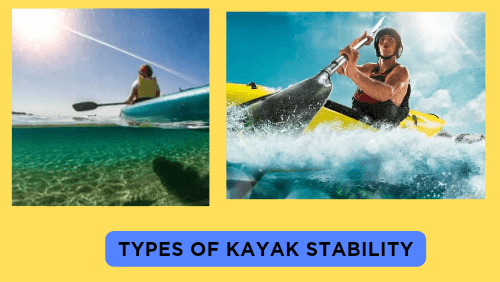
You’re going to find out about two types of stability in kayaks:
- Primary and
- Secondary.
Think of primary stability as your kayak’s steadiness when it’s sitting flat on the water, like a serene frog basking in the sun.
On the flip side, secondary stability comes into play when your kayak tilts or edges, much like that same frog leaping into action.
Understanding Primary Stability
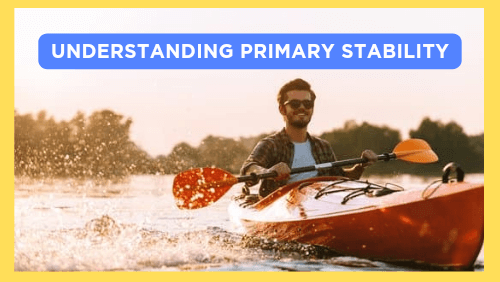
This article is designed to help. My goal is to guide you through the nuances of primary and secondary stability so that you can make an informed decision when choosing a kayak.
Whether you’re new to the sport or refining your skills, understanding these concepts is key to your confidence and enjoyment out on the water.
Deciphering Primary Stability: The Beginners’ Haven
I’m jumping right in to tackle what primary stability means for you. This type of stability refers to how stable the kayak feels when it’s sitting flat on still water. Picture a calm lake on a serene morning – that’s the domain of primary stability.
Key Features of Primary Stability
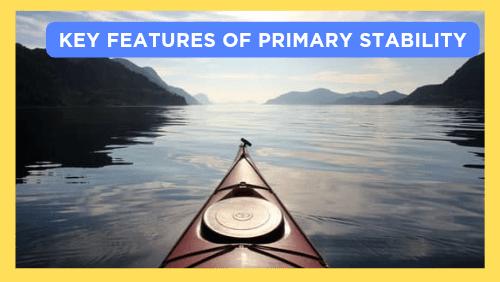
What’s going to include? Well, you’re talking about kayaks that have a wide hull and often a flat bottom design. This blend of features offers a solid base that’s reassuring for those just getting their feet wet in the world of kayaking.
Ideal for Beginners and Recreational Paddlers

You’re going to find out about why these stable crafts are particularly attractive to beginners and recreational paddlers. They’re all about providing confidence so you can focus on the joys of paddling without the anxiety of tipping over.
Optimal Conditions for Primary Stability
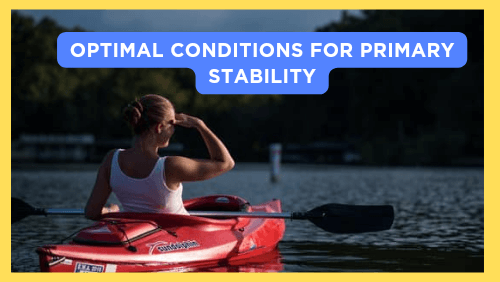
Don’t worry too much about encountering waves or a lot of movement. Primary stability shines in placid conditions. That means it’s ideal for photography, fishing, or leisurely exploring without feeling like you’re about to take a swim.
Choosing the Right Kayak
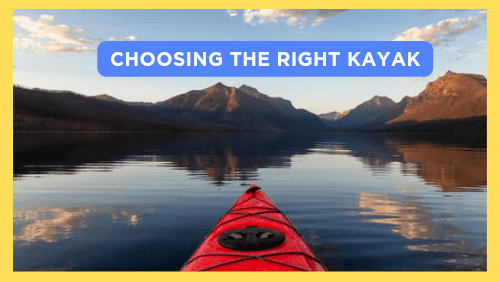
Choose something that resonates with you. If sticking to tranquil waters is your jam, a kayak with strong primary stability will be your trusty partner.
In my opinion, models like the Old Town Loon 120 exemplify this approachable stability. It’s a solid pick for those wanting to keep things steady as they go.
Navigating Secondary Stability: Mastery Over Movement
When it comes to secondary stability, you’re dealing with a kayak’s ability to perform when it’s not sitting flat on the water. Think of it as the kayak’s talent for rolling with the punches when the waves start tossing it about. It’s all about how well the kayak can maintain buoyance and resist capsizing when you’re angling on the edge.
Key Features of Secondary Stability
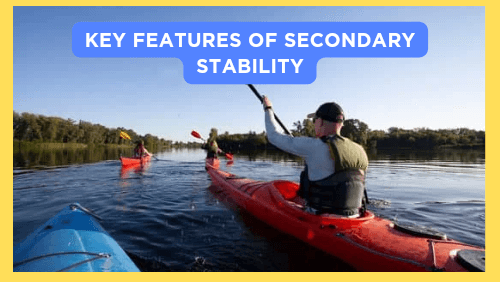
Here’s the thing: Secondary stability is key for when you’re confronted with rough waters, waves, and the challenging environment of whitewater. It’s the hero feature of kayaks made for adventure.
Design Elements for Superior Secondary Stability

In terms of design, kayaks that boast superior secondary stability often sport a narrower hull with a rounded or V-shaped bottom. This sleek shape allows the kayak to slice through water with more agility and respond quickly to changes in direction.
Trade-Offs to Consider
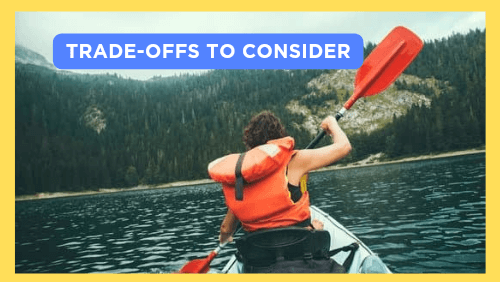
But don’t rush to judgment; this does come with a trade-off. A kayak with more focus on secondary stability might feel somewhat tippy to the unaccustomed, especially beginners who haven’t quite developed their sea legs.
Real-World Scenario

To give you a clearer picture, imagine this scenario: You’re in choppy waters, and your kayak is tilting to one side. A kayak with strong secondary stability keeps you afloat and riding the wave, instead of dunking you into the drink. It’s like having a trustworthy friend who’s got your back when things get dicePreformatted Texty.
Visual Aids and Diagrams

Now, I’m not just going to tell you about secondary stability; I’m going to show you. Visual diagrams can be a huge help in understanding the concept. I’ll include a couple of these in the article to really drive the point home.
Pros and Cons of Secondary Stability
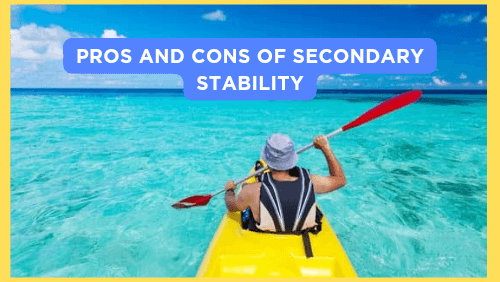
It’s also crucial to weigh the pros and cons. The pros include the kayak’s capacity to handle turbulent water conditions, and its agility when it comes to swift movements and turning. The cons? There’s less stability at rest, which can be disconcerting for novices.
Adjusting Over Time
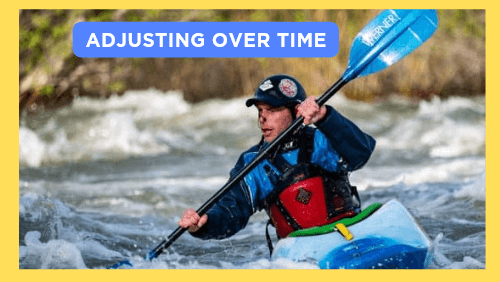
But remember, you can always adjust your approach down the road. Your first attempt at tackling waves in a kayak with high secondary stability doesn’t need to be your last. With time and practice, what feels wobbly at first might soon become your preferred paddling partner.
Harnessing Stability: Selecting the Right Kayak for You
You’re going to find out that picking a kayak isn’t just about color or design. It’s about matching your intentions with the kayak’s stability features.
Primary Stability for Gentle Waters
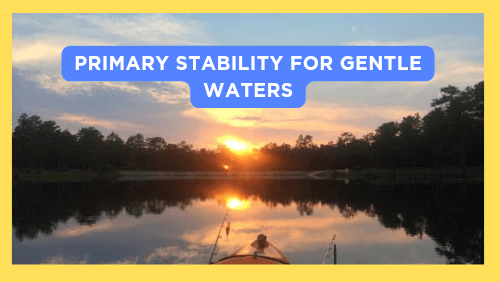
If you’re paddling in gentle waters or you’re just starting out, those kayaks with a wider hull might just be your best friend – think along the lines of the Old Town Loon 120. Their welcoming primary stability will keep you as sure as possible on the surface.
Secondary Stability for Rough Waters
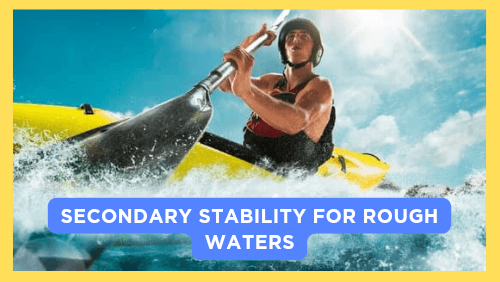
On the flip side, when you’re all about conquering the untamed waves or pushing your boundaries, a kayak like the Eddyline Skylark with rock-solid secondary stability will be in your corner. They may demand a bit of a learning curve, but the control and adaptability are worth it.
Personalizing Your Kayak Choice

I’m here to help you understand that balance on the water isn’t a one-size-fits-all. Kayak stability is deeply personal and relates directly to your comfort zone, skill level, and the kind of waters you’ll be traversing.
Demo Paddling: Try Before You Buy

In my opinion, you should always try before you buy. Demo paddling can shine a light on how a kayak really feels. Don’t worry too much about getting it perfect the first time. You can always adjust your approach down the road.
Embracing the Learning Process

Just don’t focus too much on perfection. Embrace the learning process, and remember that your first attempt doesn’t need to be your last in the world of kayaking.
I really hope that this guide has shed some light on the stability specifics of kayaks and leaves you feeling more confident in making your choice. Take your time, chat with experts, and most importantly, choose something that resonates with you.
